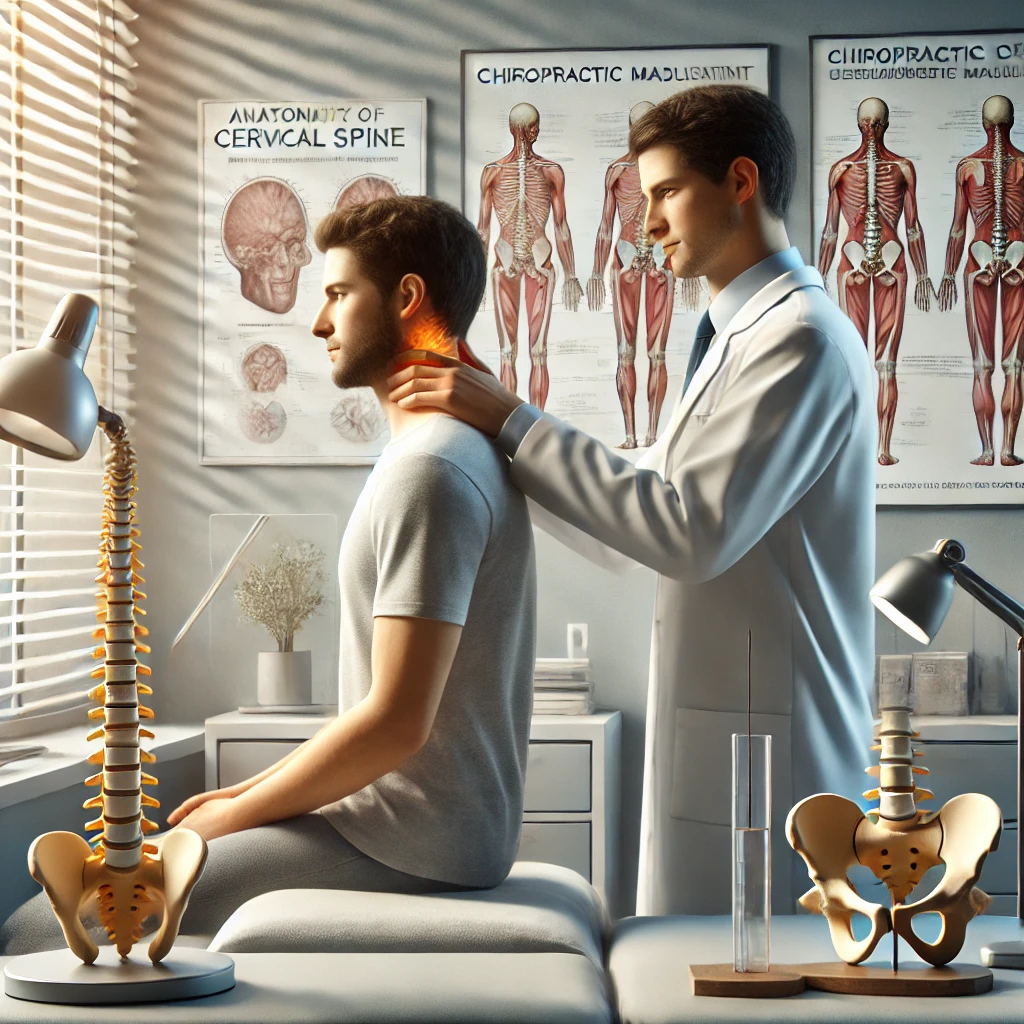|
Getting your Trinity Audio player ready...
|
How Safe is Chiropractic Neck Manipulation? An Evidence-Based Review

Chiropractic neck manipulation, or cervical spinal manipulation therapy (CSMT), is a common treatment approach used by chiropractors to address musculoskeletal conditions such as neck pain, headaches, and certain types of neurological dysfunctions. While this technique is widely accepted and practiced globally, concerns have been raised regarding its safety, particularly the risk of vertebral artery dissection (VAD) and subsequent stroke. This article aims to provide a balanced, evidence-based review of the safety of chiropractic neck manipulation, focusing on current research surrounding the risk of patient strokes.
Understanding Chiropractic Neck Manipulation
Cervical spinal manipulation involves precise, high-velocity, low-amplitude (HVLA) adjustments to the cervical vertebrae, aimed at improving joint mobility, reducing pain, and promoting neurological function. While it is considered effective for certain types of neck pain and cervicogenic headaches, questions persist about its potential risks.
The Stroke Concern: Vertebral Artery Dissection (VAD)
One of the primary concerns raised about chiropractic neck manipulation is the risk of stroke, particularly ischemic stroke caused by vertebral artery dissection (VAD). VAD occurs when a tear develops in the wall of the vertebral artery, leading to blood clot formation, which can obstruct blood flow to the brain, resulting in a stroke. The vertebral artery is anatomically situated near the upper cervical spine, raising concerns that manipulation could inadvertently stress the artery and trigger dissection.
What Does the Research Say?
1. Incidence of Stroke After Cervical Manipulation
Several studies have explored the potential link between cervical manipulation and stroke. Cassidy et al. (2008) conducted a large population-based case-control study that compared the incidence of vertebrobasilar stroke (VBS) after chiropractic visits versus visits to primary care physicians (PCPs). The study found no significant difference in the risk of stroke following visits to chiropractors compared to PCPs. The authors concluded that the association between chiropractic manipulation and stroke is likely coincidental rather than causal, as patients experiencing symptoms of VAD (such as neck pain and headaches) may seek care from either a chiropractor or a physician, making it difficult to attribute the stroke solely to chiropractic care (Cassidy et al., 2008).
2. Systematic Reviews and Meta-Analyses
A 2012 systematic review by Church et al. examined multiple studies on the risk of stroke following cervical manipulation. The review concluded that while VAD is a serious complication, it is an extremely rare event. The authors noted that the incidence of stroke following cervical manipulation was estimated to be 1 in 100,000 to 1 in 5.85 million manipulations, making it a low-risk procedure when performed correctly (Church et al., 2012).
Another review by Kosloff et al. (2015) highlighted that most patients presenting with stroke symptoms after chiropractic manipulation likely had pre-existing VAD or vascular abnormalities. These patients may have been in the early stages of VAD before they sought care, making it difficult to establish a direct causal relationship between manipulation and stroke (Kosloff et al., 2015).
3. Clinical Guidelines and Safety Recommendations
Clinical guidelines generally consider cervical manipulation to be a safe procedure when performed by trained professionals. The American Chiropractic Association (ACA) and other professional bodies recommend thorough patient screening to identify individuals at higher risk for VAD. This includes taking detailed patient histories and recognizing early warning signs such as unexplained dizziness, double vision, or neurological deficits, which may indicate underlying vascular issues.
Balancing Risk and Benefit
While cervical manipulation carries a theoretical risk of stroke, the available research suggests that this risk is exceedingly low, especially when compared to other routine medical interventions. The benefits of chiropractic manipulation, particularly for neck pain and headaches, are well-documented in numerous studies (Bronfort et al., 2010). For patients without contraindications, cervical manipulation remains a viable treatment option.
Conclusion
Chiropractic neck manipulation is considered safe for the vast majority of patients, with the risk of stroke being extremely rare. The existing body of research indicates that while vertebral artery dissection and stroke are serious complications, they are uncommon and often coincidental rather than directly caused by manipulation. Nevertheless, chiropractors should continue to follow safety guidelines, conduct thorough patient screenings, and educate patients on the risks and benefits of cervical manipulation.
References
- Bronfort, G., Haas, M., Evans, R., Leininger, B., & Triano, J. (2010). Effectiveness of manual therapies: The UK evidence report. Chiropractic & Osteopathy, 18(1), 3. https://doi.org/10.1186/1746-1340-18-3
- Cassidy, J. D., Boyle, E., Côté, P., He, Y., Hogg-Johnson, S., Silver, F. L., & Bondy, S. J. (2008). Risk of vertebrobasilar stroke and chiropractic care: Results of a population-based case-control and case-crossover study. Spine, 33(4 Suppl), S176-S183. https://doi.org/10.1097/BRS.0b013e3181644600
- Church, E. W., Sieg, E. P., Zalatimo, O., Hussain, N. S., Gluf, W. M., & Rahme, R. J. (2012). Systematic review and meta-analysis of chiropractic care and cervical artery dissection: No evidence for causation. Journal of Neurosurgery: Spine, 17(6), 519-530. https://doi.org/10.3171/2012.7.SPINE12856
- Kosloff, T., Elton, D., Tao, J., & Mior, S. (2015). Frequency and clinical predictors of adverse events following chiropractic care for neck pain and headaches. Journal of Manipulative and Physiological Therapeutics, 38(2), 90-97. https://doi.org/10.1016/j.jmpt.2014.12.008
